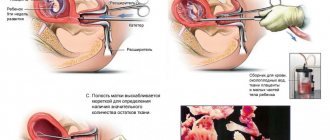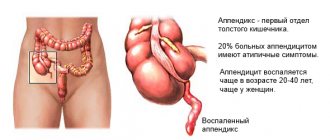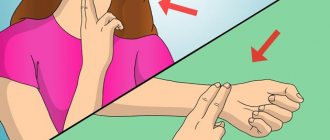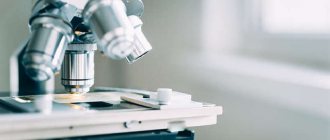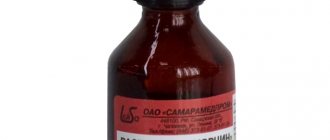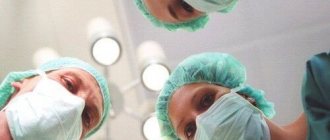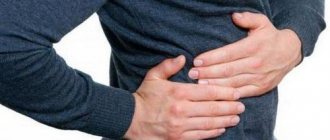The causes and consequences of jaundice in newborns are divided depending on two conditional groups that the baby may have: pathological or physiological. It is a common topic of discussion, a cause for concern during the birth of a child, and a subject for research if it begins earlier or continues beyond a certain period.
Why does jaundice appear?
Jaundice in infants is called physiological (conjugative) and occurs approximately on the third day of a newborn’s life and does not require treatment. Signs of jaundice subside after a week and are almost not observed by two weeks.
This condition occurs due to an increase in the amount of bilirubin in the blood of the newborn. Bilirubin is a bile pigment.
The high level of bilirubin in a baby is due to the baby’s body adapting to new conditions. Bilirubin is produced by the breakdown of hemoglobin. Immediately after birth, the baby changes fetal hemoglobin (HbF) to hemoglobin A (HbA). Therefore, in the newborn’s body, hemoglobin HbF is intensively broken down and the bilirubin content increases sharply.
The baby's enzyme systems are also immature. Therefore, the liver cannot cope with removing large amounts of bilirubin, and the pigment gives the skin of some parts of the body and mucous membranes a yellow tint.
As the baby grows older, the enzyme systems begin to function in accordance with the norms and remove bilirubin, the yellow tint of the skin disappears and it becomes pale pink.
Premature babies have more immature enzyme systems. Therefore, in such children, jaundice may take longer to appear and develop into a dangerous nuclear form.
Sometimes a doctor may prescribe an NSG of the brain for a newborn - do not neglect this examination, it is very important.
Which children are prone to jaundice?
Jaundice in the maternity hospital is common in newborns, but not in all. When is physiological jaundice most likely to appear:
- in case of multiple pregnancy,
- in case of prematurity,
- if your mother has bad habits,
- with a lack of iodine in a woman’s body during pregnancy,
- during traumatic births,
- when using labor stimulants,
- with mother's diabetes.
If signs of jaundice persist in children older than 1 month, this may indicate the development of pathological processes:
- genetic diseases,
- complications of postpartum injuries,
- infection of the baby during or after childbirth,
- diseases of the bile ducts,
- severe liver diseases.
To establish the true cause of jaundice in a child, you must consult a doctor . There may be no cause for concern and the yellowing of the skin is caused by breastfeeding jaundice. Pregnane jaundice occurs due to increased levels of the hormone prenandinol in the mother’s body. During lactation, it passes into breast milk, and during feeding - into the baby’s body. Such prolonged jaundice in a newborn is easy to treat; it is enough to wean him from the breast for 2-3 days. Pregnane jaundice can also occur in older babies, when they are already 2 months old, but this type of jaundice no longer occurs in three-month-old children.
Jaundice in a one-year-old child usually has the same signs and causes as in adults and requires mandatory treatment.
Bilirubin norms in infants
When a child is just born, the level of bilirubin in his blood is usually no more than 34 µmol/liter, but immediately begins to rise.
Over the course of five days after birth, bilirubin in the baby’s blood increases significantly and can reach more than 200 µmol/liter.
After about a week, the figure decreases to 165 µmol/l. The acceptable level of bilirubin in a premature baby is different. The data is shown in the table.
| Child's age | Norm of total bilirubin (µmol/l) |
| Premature baby 3-5 days | |
| Newborn up to 1 day | |
| Newborn from 1 to 2 days | |
| Newborn from 2 to 5 days | |
| Child over 1 month | 3,4 – 21 |
By about a month, the baby’s bilirubin levels return to the normal adult level and amount to 21 µmol/liter.
The amount of bilirubin in men is usually higher than in women.
Jaundice is caused by a deviation in bilirubin levels from normal. Jaundice can be both physiological and pathological.
The neonatal (postpartum) type of the disease is usually physiological in nature.
Pathological jaundice in newborns is not common. They require mandatory medical supervision and treatment if necessary. Please note that different types of illness have different causes and consequences.
Mechanism of development of jaundice
Fetal hemoglobin appears in a free state in the baby’s body after the transition from intrauterine development to independent development. This is a breakdown product of red blood cells that previously supplied the fetus with oxygen. It cannot exist separately, so it also begins to disintegrate. The child’s body gets rid of the remnants of fetal hemoglobin (before birth it was necessary to supply tissues and organs with oxygen, and then the baby began to breathe through the lungs). But the liver does not have time to dissolve bilirubin, and its concentration increases.
Hence the symptoms of jaundice in newborns. But this is not a disease or an infection, but a physiological process that is successfully completed after the final disposal of decay products, as Dr. Komarovsky says in the video. Concerns about whether jaundice is contagious in newborns are unfounded if it is physiological and not caused by an infectious disease.
The yellowishness of the skin in this case is a consequence of a high concentration of bilirubin , which the incompletely formed liver does not have time to cope with. In full-term children, more than half of the total number of children are exposed to this manifestation. Why does a child have bruises under the eyes, and is this a sign of a hidden disease, read in a separate publication.
Jaundice is an even more common symptom in premature newborns. In the former, the liver is practically formed (to varying degrees of completion); in those born prematurely, it is even less ready to perform functions.
Classification of the disease
- Hemolytic jaundice or suprahepatic. It is formed if the liver cannot cope with the processing of bilirubin, which is massively formed as a result of increased breakdown of red blood cells;
- Hepatic jaundice. This form is associated with the inability to remove bilirubin by the liver due to inflammatory diseases;
- Mechanical or subhepatic forms, which are caused by impaired passage of bile through the biliary tract.
The hemolytic form of jaundice in an infant occurs due to incompatibility in the blood type or Rh factor of the mother and baby. This form of the disease usually has a favorable prognosis, but it can also be dangerous for the child’s health.
Hepatic or parenchymal jaundice is caused by inflammatory processes in the liver parenchyma. These jaundices occur when certain bacteria or viruses attack the liver. This could be viral hepatitis, herpes virus, rubella, cytomegalovirus infection, toxoplasmosis and others.
With this form of the disease, children are often born premature, with low weight, developmental delays, and with signs of damage to other organs. Such jaundice appears immediately at birth, and the skin has a grayish tint.
Mechanical jaundice is caused by stagnation of bile. The reasons that prevent the excretion of bile in an infant may be deviations in the development of the biliary tract, bile thickening syndrome, compression of the bile ducts by tumors, etc.
With this form, direct bilirubin accumulates in the blood, which causes jaundice with a greenish tint, the liver becomes enlarged, and the color of stool (almost colorless) and urine (darkens) changes.
A separate type is “mother's milk jaundice” or Arias syndrome . This type of disease can occur in babies who are breastfed.
The cause of this form of jaundice is the increased content of hormones in mother's milk, which reduce the function of the liver to excrete bilirubin. It accumulates and causes jaundice.
This jaundice usually appears towards the end of the first week after birth and goes away within four weeks.
To diagnose jaundice associated with mother's milk, the child is transferred to artificial feeding for a while. If the amount of bilirubin decreases at the same time, and later, when feeding is resumed, increases, then a connection with breast milk can be established. But you don’t have to give up breastfeeding. Such jaundice is not dangerous and will go away on its own in a month, as soon as the level of hormones in the milk decreases and the baby’s liver activity is established.
Does your newborn hiccup after feeding? Find out in what cases this can be dangerous.
Is Staphylococcus aureus in a baby's stool so dangerous?
Causes of physiological and pathological forms
The reason for its occurrence is the natural process of adaptation of the child’s body after intrauterine development to new existing conditions. There is nothing dangerous about this. Physiological jaundice in newborns (neonatal jaundice, see photo above), the causes of which have long been clarified in modern pediatrics, does not differ in skin color, but is not accompanied by additional symptoms. These are the reasons:
If there is the slightest change in skin color, you should consult a doctor.
- hemoglobin breaks down, the need for which has passed because the child breathes through the lungs;
- unbound bilirubin appears, which the liver must bind and remove;
- there are not enough enzyme fractions to dissolve the pigment, it ends up in the blood and gives color to the skin;
- the liver begins to work under new conditions and removes metabolic products from the body.
The mutual influence of two factors, leading to the coloring of the skin, is actively eliminated by the process of adaptation of the child’s body to new living conditions. Nothing but biochemical reactions, gradual adaptation, restructuring of functionality.
Pathological jaundice in newborns is determined by additional symptoms . The child is abnormally lethargic or restless, does not sleep all day, there is a concomitant color of urine and stool (the causes of mucus in the stool and what its color is considered normal are discussed here), hepato- and splenomegaly, he does not eat anything, an attentive doctor notices symptoms of central nervous system damage.
How dangerous jaundice is in newborns can only be answered after determining the cause. After laboratory and hardware diagnostics, a pathological one is identified, the causes of which lie in:
- congenital liver pathologies, which may have varying degrees of organ impairment, with a favorable or negative prognosis, and yellowing as a common symptom;
- consequences of incompatibility between mother and fetus based on blood type or Rh factor (hemolytic disease, depending on the form and stage, can pose a threat to the child;
- harmful effects on the fetus through the mother’s body (overdose of vitamins, medications, a consequence of her diabetes);
- infectious diseases;
- previous intrauterine cholelithiasis, with malformations of the gallbladder;
- nuclear jaundice caused by the accumulation of bilirubin and fraught with cerebral encephalopathy, etc.
Pathological jaundice can manifest itself for variable reasons - from congenital pathology and introduced infection, to mechanical damage to the liver during childbirth. For the emergence of a physiological state, the prerequisites exist for every baby.
Causes
The causes of physiological jaundice may be:
- Premature birth (premature baby);
- Some maternal illnesses during pregnancy;
- Diabetes mellitus in the mother of the child;
- Oxygen starvation in the prenatal period;
Causes of pathological jaundice :
- Incompatibility of Rh or blood type between the baby and his mother;
- Heredity;
- Infectious liver diseases (hepatitis);
- Anomalies in the development of the infant’s gastrointestinal tract (tumors, cysts, undeveloped bile ducts, etc.);
- Overdose when taking medications;
- Hemorrhages;
- Pathological birth.
Causes of jaundice
While in the mother’s womb, the baby “breathes” special hemoglobin (fetal). This hemoglobin saturates the fetal blood with the necessary oxygen. At the moment of birth, when the child takes his first breath, the composition of his blood begins to change rapidly and fetal hemoglobin is replaced by real (live) hemoglobin. As a result of this, the baby’s body begins to get rid of unnecessary hemoglobin, as a result of which it breaks down into bilirubin (bile pigment).
Jaundice in newborns is not contagious to other children and adults, the only exceptions being infectious liver diseases, such as hepatitis B.
Removing bilirubin from a child’s body is a very difficult task. First, the pigment enters the liver, where it binds with special liver enzymes, and only then, purified bilirubin is excreted from the body along with the child’s urine and feces. But if a lot of such bilirubin accumulates, the newborn begins to develop jaundice.
1. Physiological jaundice appears for several reasons, the most common of which are:
- Rh conflict between the child’s blood and the mother’s blood;
- early labor;
- blood group mismatch.
Often jaundice appears in newborns precisely because of premature birth, when the baby’s body is not yet ready for life outside the mother’s womb. Rarely, jaundice can be observed as a result of incompatibility of blood groups and a conflict between the Rh factor of the woman and the child. In any case, physiological jaundice in a newborn indicates a severe overload of his liver.
Symptoms of physiological jaundice are an increased level of bilirubin; the child usually begins to turn yellow 2–3 days after birth, the skin color is yellow only on the child’s face and body (up to the navel), the high bilirubin content begins to fall after a short time. Physiological jaundice does not cause the baby any discomfort, the child remains active, appetite is not reduced, and sleep is normal.
Important! Although this type of jaundice is considered natural and safe, it is still necessary to monitor the baby, otherwise more serious signs may be missed, causing physiological jaundice to become pathological.
2. Pathological jaundice develops when the following reasons occur:
- as a result of various injuries that were received during the birth process;
- pathologies of child development that arise on a genetic background;
- when a viral infection enters the child’s body (during childbirth or long before it begins);
- severe pathological conditions of the liver;
- diseases of the biliary tract.
The symptoms of pathological jaundice are very easy to recognize; even the baby’s mother can do it. You should pay attention if such signs appear as: the baby turned yellow a short time after birth, the child is very sleepy, there is no appetite, or vice versa, the baby becomes capricious, often cries and screams. It is also worth paying attention to such signs as: the child’s urine (it has become dark), feces are almost colorless, the skin has acquired a greenish color, the bilirubin content in the blood is increased, and organs such as the spleen and liver are greatly enlarged.
Pathological jaundice does not go away after a few days, like physiological jaundice, so it is necessary to take urgent measures to help the baby.
3. Breast milk jaundice.
There is another type of jaundice that occurs as a result of breastfeeding. When there is a lot of female hormone (estrogen) in mother's milk, the child's body begins to actively remove it, and only then does it turn to bilirubin. This is why a breastfed baby develops jaundice. You can get rid of it if you stop giving your baby breast milk and switch him to formula, but then the baby will not receive all the necessary nutrients that are contained in mother's milk. There is nothing to worry about - the jaundice will go away on its own in about 3 months.
Symptoms
How to distinguish physiological jaundice from pathological? A doctor must make a diagnosis based on blood counts and observations of the baby’s health.
Symptoms of physiological jaundice :
- staining of the skin, mucous membranes or sclera of the baby’s eyes yellow on the third day after birth;
- Reduction or disappearance of pronounced signs of jaundice by day 10;
- A decrease in bilirubin levels by the 7th day of life and their normalization before the first month;
- The baby's general well-being is not affected.
Symptoms of pathological jaundice can be identified as follows:
- jaundice appears during the first days after birth;
- bilirubin level is more than 220 µmol/liter and is increasing;
- the duration of icteric staining is more than two weeks;
- the appearance of jaundice after the 14th day of life;
- change in stool color to almost colorless;
- darkening of urine;
- constipation (especially with jaundice caused by gastrointestinal pathologies);
- liver enlargement;
- deterioration of the child’s general well-being.
Kinds
Physiological jaundice in newborns is called neonatal jaundice or hyperbilirubinemia. This kind of jaundice appears at birth, and there is nothing to worry about: it will go away without the intervention of doctors. The doctor must determine whether the jaundice is physiological or pathological.
The first symptoms can be noticed on days 1-3 of a child’s life (sometimes later). In all babies, the level of indirect bilirubin increases, but transient (or temporary) jaundice develops in 50-70% of newborns. The skin sometimes turns lemon-colored, internal organs do not enlarge, and anemia is not diagnosed.
It should be noted that in many cases with neonatal jaundice, the level of estrogen in breast milk increases, which is excreted before bilirubin.
Of course, moms worry about when the jaundice should go away? If this condition is caused solely by physiological reasons, then it lasts approximately 7-10 days. In case of hormonal disorders affecting the mother, jaundice lasts longer (even in a 1-month-old child).
Neonatal jaundice can occur not only in a one-month-old baby, but also in a baby who is already three months old.
As for breastfeeding, there is no need to interrupt it. The main thing is that the child sleeps well, has an active sucking reflex, and his weight gain is not below normal.
How is the degree of jaundice assessed?
The degree of jaundice is assessed using the Cramer scale. This method is based on examining the child in natural light and determining the correspondence between the coloring of the child’s body parts and bilirubin levels . You can study the method in more detail using the figure.
So, if only the scalp and sclera of the eyes or the oral mucosa are jaundiced, the total bilirubin is up to 100 µmol/liter. This is the first degree.
If there is jaundice of the head and body to the waist, then total bilirubin is up to 150 µmol/liter. This is the second degree. And so on.
An alternative method is TCB - the transcutaneous bilirubinometry method. It is used in developed countries, especially often with racial diversity of patients (with different skin colors), when it is difficult to assess the degree of jaundice of their skin.
How does jaundice occur?
To stop the disease in time, it must be detected.
The following symptoms help with this:
- the newborn's skin color immediately changes;
- after three to four days the yellow color becomes brighter;
- the yellow tint persists for more than a month;
- In addition to yellow, the skin can also acquire a green tint.
You need to pay attention not only to skin color, but also to additional symptoms:
- discolored stool;
- dark urine;
- bruises appear;
- the liver and spleen are enlarged;
- the child feels bad.
Treatment
If we are talking about physiological jaundice, then it does not require treatment, only medical supervision. In this case, sunbathing, breastfeeding, and walks in the fresh air will help.
Treatment of pathological jaundice depends on its cause and is prescribed by a doctor after all the necessary studies and medical history. Most often, treatment is carried out in a hospital.
Hepatic jaundice caused by viruses and bacteria is treated with special antibiotics, antiviral drugs, and immunocorrective therapy is prescribed.
If jaundice is caused by pathologies in the development of the biliary tract or intestines, then most likely surgery cannot be avoided.
To liquefy bile, choleretics and cholekinetics are prescribed.
Enterosorbents (for example, enterosgel) can be used as adjuncts. Sometimes glucose is prescribed; how and how much to give is decided individually in each case.
In some cases, it is necessary to replenish vitamins and microelements and prescribe fat-soluble vitamins D3, A, E, and calcium, phosphorus and others.
Drugs that affect the activity of microsomal liver enzymes, so-called inducers, may be prescribed. In this case, the inducers are barbiturates (phenobarbital, benzonal and others).
Treatment and consequences
Treatment tactics and possible consequences are determined after diagnosing the pathological condition and assessing the general threat to the child’s body.
This is how phototherapy is performed on a newborn baby in the maternity hospital.
Common destination options are:
- phototherapy for jaundice in newborns (treatment with a special lamp, the light of which helps accelerate the breakdown of bilirubin;
- fresh air and sunlight to produce certain substances that can accelerate the process of decay and release of a specific pigment;
- the use of glucose, which optimizes liver functionality and promotes the breakdown and elimination of harmful bases;
- activated carbon, Hofitol or Smecta for jaundice in newborns are used only on the recommendation of a doctor, if there is an urgent need for it.
In discussing such a seemingly harmless problem as jaundice, it is believed that the main thing is to distinguish between both processes . The pathology requires careful therapy, and sometimes even surgery, but if its cause is a simple process of adaptation, no medications are needed.
Phototherapy
Phototherapy is most effectively used to treat jaundice with increased indirect bilirubin. This is treatment using special phototherapeutic lamps with an ultraviolet radiation spectrum with a wavelength of 400–500 nm.
With the help of light waves of this length, indirect bilirubin is transformed into a water-soluble isomer and excreted in the urine. Thus, the amount of bilirubin decreases.
Treatment is carried out if the level of bilirubin reaches values at which toxic damage is possible.
The break during a phototherapy session is 2-4 hours in a row. In cases where the bilirubin level is much higher than normal, light therapy can be carried out continuously. The average course of phototherapy reaches 96 hours.
How long the baby should lie under the device is determined individually in each case. The use of such lamps is very effective and often allows you to completely cure the disease.
During phototherapy, it is imperative to monitor the baby's fluid balance.
In some cases (for example, with a protracted illness), it is possible to carry out such treatment at home by renting a photo lamp.
In the treatment of pathological prolonged jaundice, infusion therapy is used. IVs of glucose, saline, and other medications may be used to maintain fluid balance and more quickly remove bilirubin from the baby's blood.
The following medications can be used to treat various types of disease: hofitol, ursosan, polysorb, ursofalk, galstena, elcar.
Attention! All medications must be prescribed by your doctor. None of the medicines listed here should be used without consulting a specialist.
In any case, the need for treatment of jaundice is determined by the doctor.
Find out everything about the DTP vaccination: – explanation, contraindications and side effects.
Rhesus conflict
What is hemolytic jaundice in newborns? This pathology develops due to the incompatibility of mother and child in blood groups. Most often, jaundice appears due to Rh conflict. Children with this disease begin to turn yellow in the first hours of life. Babies are sleepy and lethargic. Upon examination, the doctor will find an enlarged spleen and liver. Hemolytic jaundice in newborns requires immediate treatment. The main thing is to prevent the development of kernicterus, in which excess bilirubin will negatively affect brain cells.
How to treat hemolytic jaundice in newborns? The fact is that it is easier to fight this form of the disease before the baby arrives. Rhesus conflict can be prevented by the following measures:
- constant monitoring of antibodies and hemalysins during pregnancy,
- careful attitude towards your health,
- use of anti-Rhesus immunoglobulin in the first two days after the birth of the baby.
The duration and methods of treatment for a baby born with Rh conflict depends on the degree of the disease. Phototherapy and glucose drips are used. In severe forms, blood transfusions may be required.
Possible consequences and complications
With any forms of pathological jaundice, complications are possible due to late diagnosis and lack of adequate treatment.
Since the hemolytic form of jaundice is most often caused by a discrepancy between the Rh factor of the baby and his mother or their blood group, it is very important, if the mother has a negative Rh or first blood group, to be observed by a gynecologist and do all the necessary tests related to this risk. In case of complications, doctors will be able to provide assistance in a timely manner, without serious consequences.
Not only total, but also direct and indirect bilirubin are assessed. Indirect bilirubin has a toxic effect on the body and affects the child’s central nervous system. This occurs when the amount of such bilirubin in the blood serum of a full-term baby increases to more than 342 µmol/liter. The degree of brain damage depends not only on the amount of indirect bilirubin in the blood, but also on the time it remains in the cells of the central nervous system.
If pathological jaundice is not treated in time, the baby may have decreased hearing, vision, and developmental delays.
Therefore, it is very important to take measures to reduce bilirubin, establish the correct diagnosis and, if necessary, undergo adequate treatment.
Prolonged jaundice
Prolonged jaundice can last more than two, and in premature babies - more than four weeks. This duration of the disease sometimes indicates that the fetus was infected in the mother’s womb. Liver cells in this case are exposed to toxic substances. How to treat jaundice after a month? Phototherapy and glucose droppers are complemented by hepatoprotective and choleretic drugs.
The cause of prolonged jaundice may be the individual characteristics of the newborn , due to which the baby simply cannot process bilirubin as quickly as others. Therefore, this process is slower for him, and therefore longer.
Vaccination against hepatitis B can also change the color of the skin and sclera. The symptoms should gradually go away on their own.
An important question is: is it dangerous to vaccinate a child against hepatitis B during jaundice? Dr. Komarovsky argues that there is no need to refuse vaccination. Neonatal jaundice is not a contraindication. And it is the doctor, and not the mother herself, who must distinguish normal jaundice from pathological one. Therefore, if there are any external changes in the baby, it is necessary to show him to a specialist.
Standard indicators of bilirubin
After the baby is born, bilirubin levels constantly change depending on the baby’s age. In full-term and premature babies, bilirubin levels will be different. The table below will help you understand them.
| Age category of the baby | Standard indicators of the bilirubin index for full-term infants | Standard indicators of the bilirubin index for premature infants |
| day | up to 85 µmol/l | up to 97 µmol/l |
| 36 hours | up to 150 µmol/l | up to 120 µmol/l |
| two days | up to 180 µmol/l | up to 150 µmol/l |
| from the third to the fifth day | up to 256 µmol/l | up to 171 µmol/l |
| from the sixth to the seventh day | up to 145 µmol/l | up to 145 µmol/l |
| eighth - ninth day | up to 110 µmol/l | up to 97 µmol/l |
| from the tenth to the eleventh day | up to 80 µmol/l | up to 50 µmol/l |
| twelfth - thirteenth day | up to 45 µmol/l | up to 35 µmol/l |
| over fourteen days | up to 20.5 µmol/l | up to 18 µmol/l |
Pediatricians use these indicators to determine the normal bilirubin index in newborns.
Symptoms of icteric syndrome
The first signs of jaundice in children are revealed by visual examination. The skin and whites of the eyes acquire a yellowish tint of varying intensity depending on the color of the child’s skin and the severity of the disease. Additionally, symptoms such as:
- skin itching;
- chills;
- nausea, vomiting;
- lack of appetite leading to weight loss;
- digestive disorders;
- changes in the color of stool and urine (lightening or darkening).
What is jaundice?
The manifestation of icteric syndrome is caused by an increased level of bilirubin in the blood, a bile pigment formed during the breakdown of hemoglobin. When a child is healthy, “yellow” cells accumulate in his digestive tract and are gradually eliminated from the body.
However, malfunctions in the functioning of some systems provoke excessive destruction of hemoglobin, slow processing and removal of bilirubin, resulting in yellowing of the skin and sclera of the eyes.
Main symptoms of jaundice
All types of jaundice have characteristic symptoms, for example, darkening of the skin and mucous membranes. The whites of the eyes turn yellow and look almost lemony at the height of the disease.
If after two weeks the baby's skin is still an unnatural shade, then there is reason to worry and visit a doctor. To find out the type of jaundice and the level of bilirubin, you need to take a blood test. Only after this is appropriate treatment prescribed. Since the bilirubin indicator is closely related to a number of factors, it is not possible to guarantee the interpretation of the results obtained. Doctors make a conclusion about the course of the disease and outline the overall picture. The signal about the development of pathology always comes down to an abnormal change in skin color.
The onset of symptoms differs in time and other characteristics:
- Metamorphoses with the skin occur in the first days of a baby’s life;
- After 3-4 days the yellowness becomes more intense;
- Yellow skin color may not disappear for 30 days;
- The onset of symptoms sometimes occurs intermittently;
- In addition to yellowness, a green tint is possible.
In addition to the above signs of the disease, the following is observed:
- Discoloration of stool;
- Darkening of urine;
- The appearance of bluish edema;
- Inflammation of the liver and spleen;
- General deterioration in health.
When a child's body is sick with kernicterus, babies look drowsy and show a weak sucking reflex.
Is jaundice dangerous and how can it cause harm?
Should I be afraid of jaundice and how can it harm a newborn? Yes, there are concerns. Only the pathological type of jaundice threatens the life and health of the baby. Lack of treatment is fraught with complications:
- brain poisoning with toxins;
- damage to the nervous system;
- impaired reflexes;
- mental retardation;
- cirrhosis and liver cancer;
- weakened immune system;
- poor liver function;
- hearing loss;
- paralysis.
But the worst thing is death. To avoid serious consequences and not be late with treatment, it is necessary to carefully monitor the baby’s condition.
The effects of jaundice on the body of a newborn
In the case of pathological forms of the disease described above, it is impossible to say with absolute certainty when the disease will end and the baby will finally recover. The duration of the disease is determined by the severity of the course and the characteristics of the body.
What should be done first in case of jaundice and how to determine the onset of the disease? If yellowing of the skin occurs in the first hours of a baby's life, all signs point to a conflict between the blood of mother and child. Poor development and drowsiness are considered confirmation of hemolytic disease and liver dysfunction. When sick children experience convulsions and cry incessantly, you should immediately seek help from specialists. Such severe symptoms may accompany kernicterus.
Kernicterus has serious consequences. We are talking about problems with hearing and the motor system. According to official medical sources, even deaths have been recorded.
At the first signs of jaundice, the child should not be left unattended, otherwise there is a possibility of missing signs of the development of pathology. A timely and correct course of treatment will speed up the recovery process and protect against consequences.
As mentioned earlier, there are no complications from physiological jaundice. Its duration usually does not exceed 2-3 weeks.
As a rule, by the age of one month, babies have already recovered from jaundice and are recovering. When the cause of the disease is mother's milk, the depression of the body is delayed for several months. Then the eyes brighten, and the skin loses its yellow tint.
Neonatal jaundice
A common type that appears in many newly born babies.
It is not called a disease, it is not treated, and without serious consequences after manifestation, it disappears over time. But you should understand that when it appears, the liver is overloaded and the child needs help. The main indicator of any type of jaundice is changes in the whites of the eyes, the surface of the mucous membrane, and the skin to a lemon color. If two weeks have passed and she has not recovered, it is better to visit a doctor. Before treatment, he must prescribe a blood test, which depends on several factors, so the results of the study will not give a clear answer. In such situations, a conclusion is made based on the general condition of the baby’s body.
The main symptom of all types of jaundice is the skin changes color. The main thing to notice is this feature and the time of its manifestation:
- The skin changed as soon as the baby was born
- After four days, the skin color becomes brighter, the manifestations intensify
- Jaundice lasts over thirty days
- Signs appear and disappear
- Green tint on yellow skin
This also changes:
- Feces
- Urine darkens
- Blue spots appear on the body
- On examination, an enlarged size of the spleen and liver is felt
- The newborn is not feeling well
With such symptoms, the sucking reflex disappears, convulsive movements occur, and the child is constantly sleepy.
Complications and prevention
Physiological jaundice does not threaten the life or health of the child; specific therapy is not carried out; medical supervision is sufficient until the condition normalizes.
In case of icteric syndrome, which is a consequence of liver pathologies and impaired bile outflow, the prognosis is determined by the timeliness of diagnosis and treatment. Hepatitis of viral origin leads to complications - primary liver cancer, cirrhotic processes, fibrotic transformations - a disease during which full-fledged cells are replaced by connective tissues, which leads to organ dysfunction.
There are no preventive measures that would guarantee 100% protection against the development of jaundice in a child. Therefore, doctors provide general recommendations:
- Irradiation of newborns with an ultraviolet lamp or in a natural way - they are taken outside so that the child receives a sufficient amount of sunlight.
- Timely treatment of congenital and acquired pathologies.
- Proper nutrition, especially for preschool children.
- Use medications only on the recommendation of a medical specialist.
- With a long course of antibiotic therapy, it is necessary to monitor the condition of the liver through ultrasound and laboratory blood tests.
- Avoid contact of the child with household chemicals and other substances that have a hepatotoxic effect.
Only in newborn children does jaundice appear due to the immaturity of the liver enzyme system; in other cases, the causes are pathological, so a comprehensive diagnosis and subsequent treatment are required.
Jaundice in children is not an isolated disease, but an alarming signal about a malfunction in the child’s body. To understand how to act in case of jaundice syndrome, it is worth understanding the causes, symptoms of jaundice and the forms of its pathology.
Diagnosis of jaundice in children and adults
Diagnosis of the disease includes:
- Blood test (biochemistry and general);
- Analysis of urine;
- Ultrasound of internal organs (biliary tract, liver, pancreas);
- Determination of bilirubin content in the blood;
- Percutaneous transhepatic cholangiography;
- Fibroesophagogastroduodenoscopy (FEGDS);
- CT scan;
- Splenoportography.
In some cases, a liver biopsy is also prescribed.
Bilirubin: General information about the pigment
Bilirubin is a yellow pigment that is a byproduct of the breakdown of red blood cells.
Red blood cells circulate through the bloodstream and are responsible for normal gas exchange rates in the body. They consist of the protein compound hemoglobin, which supplies all cellular structures with the oxygen molecules they need for normal functioning. After delivery is completed, hemoglobin picks up the carbon dioxide produced by the cells on the way back.
The breakdown of red blood cells is normal. Red blood cells that have spent their time are disposed of, and they are replaced by new red blood cells. The blood of an unborn baby contains fetal hemoglobin cells, which are responsible for transporting oxygen throughout the body of the fetus in the womb until it is born and the lungs take over this function. When the baby is born and breathes, fetal hemoglobin will be replaced by normal hemoglobin. Hemoglobin found outside red blood cells is toxic. To neutralize it, a series of transformations occur in the body, as a result of which bilirubin is formed.
Treatment of jaundice in a child
Self-treatment of icteric syndrome is unacceptable. The first (main) stage of medical care is provided in a hospital. Treatment is aimed at eliminating the primary disease that caused changes in the functioning of the body. The technique and choice of medications depend on the cause of the appearance of “yellowness”.
If the basis of the pathological condition is viral hepatitis, then it is necessary to take antiviral drugs and drugs that activate the immune system. Obstructive jaundice can be eliminated exclusively by surgery.
Young patients are required to take enzymes and fat-soluble vitamins. Everyone, without exception, is recommended to follow a strict diet with minimal fat. It is necessary to exclude from the children's diet for the treatment period and recovery time: pickles, chocolate, sausage delicacies, sour berries, baked goods, eggs, ice cream, mushrooms.
Parents should monitor the child’s strict diet for another 2-3 weeks after drug therapy. Fried and fatty foods are prohibited for another 2 months.
The baby's daily menu should be composed of low-calorie dairy products, various cereals, steamed vegetables, and boiled meat. Pasta, weak tea and low concentration juice are acceptable.
Forms
Yellowing of the skin and sclera of the eyes may indicate one of the following disorders: either an excessive amount of bilirubin is released, or it does not have time to be eliminated from the body. Typically, the circulation of this substance is as follows: during the breakdown of red blood cells, indirect biliverdin is released, which turns into indirect (free) bilirubin, which is captured by liver cells, and it binds to glucuronic acid. After this, direct, that is, bound, bilirubin, along with bile, enters the intestines and leaves the body through it. At the last stage, it is partially absorbed back, after which it is excreted by the kidneys.
The sun don't shine
The form of jaundice in a child depends on at what stage in this chain the failure occurred. There are 3 forms:
- suprahepatic (hemolytic),
- hepatic (parechymatous),
- subhepatic (obstructive, or mechanical).
Suprahepatic form
Hemolytic jaundice occurs due to increased breakdown of red blood cells, as a result of which a large amount of hemoglobin is released and, accordingly, the same amount of indirect bilirubin is formed. The liver cannot cope with its transformation into a straight line.
This form is often found in newborns. The liver itself does not suffer, and transaminases are normal.
Among the reasons for the development of this form of jaundice are hemolytic and pernicious anemia, sepsis, endocarditis, malaria, intoxication with drugs that provoke hemolysis, as well as transfusion of incompatible blood.
With hemolytic jaundice, the baby exhibits the following symptoms:
- moderate pallor of the skin and the appearance of jaundice on them, as well as on the sclera and mucous membranes;
- change in color of stool to dark brown;
- enlarged liver and spleen.
Blood tests record an increase in the level of reticulocytes (precursors of red blood cells) and a shortening of the lifespan of the red blood cells themselves.
Jaundice is not a disease, but a sign of liver problems
Hepatic form
In this case, icteric syndrome can be triggered by any pathological process occurring in the liver cells or biliary tract. The metabolism of bilirubin in the organ is disrupted, and the child develops one of the following types of jaundice.
Hepatocellular
It develops according to the following algorithm: the integrity of liver cells is disrupted, and bilirubin enters the extracellular space, after which it can only be excreted from the body in urine; and not with bile.
Differential diagnosis of jaundice + table
The hepatocellular form can be caused by:
- viral hepatitis;
- poisoning with certain chemicals;
- drug intolerance;
- liver cirrhosis;
- infectious mononucleosis;
- leptospirosis.
Cholestatic
Occurs due to metabolic disturbances; components of bile and changes in the degree of permeability of bile capillaries. At the same time, the level of both types of bilirubin, bile acids and alkaline phosphatase in the blood increases. The elimination of bilirubin metabolites from the body does not occur or its rate is significantly reduced.
The causes of cholestatic jaundice are:
- cholestatic hepatitis;
- cirrhosis of the liver;
- taking certain medications.
Enzymopathic
It is a consequence of a deficiency of enzymes necessary for the normal metabolism of bilirubin. Her reasons:
- starvation;
- administration of special drugs during fluoroscopy;
- the presence of Gilbert-Meulengracht and Crigler-Najjar syndrome.
With enzymopathic jaundice, an increased level of indirect bilirubin is recorded in the blood.
The main thing is to notice the symptoms in time
Subhepatic form
Yellowing of the skin occurs due to a violation of the outflow of bile, which can be caused by a cyst or tumor, scars, stones, or parasites. In this situation, bile permeates the liver cells and enters the blood.
The first signs of the subhepatic form are:
- increasing jaundice;
- the presence of foam when urinating and a “beer” shade of urine;
- colorless feces with a clayey consistency. Analysis shows high levels of fatty acids and soaps.
A blood test reveals high levels of cholesterol, bilirubin, bile acids and alkaline phosphatase.
A special form of icteric syndrome
This is carotene jaundice, which is otherwise called “false”. Its distinctive feature is the absence of yellowing of the eye sclera - only the skin on the palms and soles, as well as the tip of the nose, is colored. The reason for this condition is the predominance of foods high in carotene in the child’s diet: pumpkin, carrots, apricots, broccoli, tomatoes, etc. Therapy in this case consists of reducing the consumption of such foods.
Is treatment required?
Most babies have jaundice and go away on their own on the 7-10th day of life (maximum 3-4 weeks). Drug correction is usually not prescribed, but if the amount of bilirubin in the blood significantly exceeds the permissible norms, phototherapy sessions are indicated for the child. The baby is placed under a special ultraviolet lamp, covering the eye area with protective glasses. The duration of the procedure is determined individually, as well as the duration of treatment. At home, it is recommended for the child to sunbathe. In summer they can be done throughout the day, but it is better to choose periods when the sun is not particularly active: morning (before 11-12 o'clock in the afternoon) or evening (after 16-17 o'clock). In winter, on the contrary, it is better to arrange baths between 13:00 and 16:00, since at this time ultraviolet rays are most active and penetrate well through the atmospheric layer. The procedure is performed as follows:
- the baby must be completely undressed (including the diaper);
- lay a thick diaper on a hard surface on which sunlight falls (it is better to use flannel);
- Place the baby on the diaper and leave for 10-12 minutes, periodically turning him from his tummy to his back and back.
Treatment of jaundice in a newborn
During the procedure, it is necessary to distract the child, tell stories or sing songs. He does not yet understand the meaning of the words spoken, but he perfectly grasps the intonations of a familiar voice that will help him calm down. If the baby continues to cry, you can pet him or pick him up by going to the window.
If the cause of jaundice is a viral infection, a course of antiviral drugs, as well as enzymes that restore liver cells and improve the functioning of the organ, may be prescribed. For blood diseases, iron supplements, as well as cytostatic (antitumor) drugs, can be used - their choice and the need to take them depends on what kind of disease caused the accumulation of bilirubin. Jaundice is a physiological condition of a newborn baby, which in most cases does not require drug treatment. Normally, jaundice disappears on the 10th day of a baby’s life, but protracted forms also occur (up to 3-4 weeks). If the skin retains a yellowish tint, and the child is already a month old, you need to go to the hospital - the cause may be severe pathologies of the liver and biliary tract, requiring emergency surgical care.
Share the article on social media. networks:
Therapy for kernicterus
Women are concerned about the question of how to treat jaundice in newborns when there is a risk or a pathological condition has already been diagnosed.
The most common method of reducing bilirubin levels in the blood is phototherapy. Quartz lamps are used for its implementation.
– they break down excess substances that accumulate in the skin.
As long as yellowness remains, phototherapy sessions are required. Basically, a scheme is organized for alternating irradiation and feeding the child.
If the course is not severe, droppers with a 5% glucose solution are required to remove excess bilirubin. In advanced forms, a blood transfusion is performed to eliminate all toxic bilirubin. As with any form of kernicterus, phototherapy is implemented and IVs are placed. The most effective method remains transfusion. It helps eliminate excess bilirubin very quickly.
If yellowness of the skin is diagnosed in the maternity hospital, and other signs of pathological jaundice occur, then fasting blood is taken from a vein for analysis. The result shows the bilirubin content, and the doctor makes an accurate diagnosis - physiological or pathological jaundice.
The normal bilirubin level is 255 µmol/l. If it is exceeded, conservative therapy or surgery is carried out according to indications.
. If the bilirubin level is normal, but the child's body weight is low, the pediatrician may still prescribe phototherapy and glucose drips.
Treatment of neonatal jaundice
To prevent jaundice and reduce the degree of hyperbilirubinemia, all newborns require early (from the first hour of life) and regular breastfeeding. In newborns with neonatal jaundice, the recommended frequency of breastfeeding is 8–12 times a day without a night break. It is necessary to increase the daily volume of fluid by 10-20% compared to the physiological need of the child, and take enterosorbents. If oral hydration is not possible, infusion therapy is performed: glucose drip, physical. solution, ascorbic acid, cocarboxylase, B vitamins. In order to increase the conjugation of bilirubin, phenobarbital may be prescribed to a newborn with jaundice.
The most effective treatment for indirect hyperbilirubinemia is continuous or intermittent phototherapy, which helps convert indirect bilirubin into a water-soluble form. Complications of phototherapy may include hyperthermia, dehydration, burns, and allergic reactions.
For hemolytic jaundice of newborns, exchange transfusion, hemosorption, and plasmapheresis are indicated. All pathological jaundice of newborns require immediate treatment of the underlying disease.
Can jaundice occur from breast milk?
In some cases, yellowing of the skin appears only a week after birth. Often, such manifestations are characteristic of those children who experience rapid weight gain. Mothers of such babies produce a lot of milk, which contains a large amount of the female hormone estrogen due to the physiological characteristics of the female body after childbirth.
Estrogen in milk interferes with the natural excretion of fetal bilirubin from the baby's body. If the bilirubin index does not drop, then the mother will need to express her milk, warm it up to 70 degrees, cool it, and only then give it to the little one.
During heating, the hormone is destroyed, but the composition and nutritional value do not change. By heating the milk, you can eliminate the negative effect of maternal hormones on the baby’s body without interrupting breastfeeding. Young mothers should take into account that often in the maternity hospital they do not bother with expressing and warming milk, recommending that they immediately switch the baby to infant formula.
This is fundamentally wrong. Since hormonal changes in the female body will end in a couple of weeks, but maintaining the possibility of breastfeeding after such a break is unlikely to be possible. Therefore, a woman should monitor this herself and not give up breastfeeding to please doctors, depriving her child of a useful product that will help maintain health and support immunity.
Mechanical jaundice
Rare, but an anomaly with reasons:
- Problematic gallbladder
- Ducts that remove bile are difficult to pass
- Difficult situation with the liver
They indicate disorders at the genetic level, trauma during childbirth. After just a couple of weeks, the disease manifests itself more clearly.
The skin is rich yellow with a green tint. The baby's stool is not just light, but not colored at all. During the examination, the doctor discovers a dense liver and an enlarged spleen. To confirm this suspicion, additional examinations are carried out, starting with ultrasound. Treatment is prescribed according to the identified pathology.
Among the important indicators, jaundice after childbirth can become a deviation:
- Conjugation with poor liver function, when its enzymes are not able to bind bile pigment, which is why it does not come out
- Nuclear appears if the level rises sharply with jaundice immediately after childbirth. It is toxic to the nervous system
- Hepatic occurs when microorganisms, viruses infect the cells of the liver gland
How to quickly reduce the amount of pigment in a newborn’s body?
At home, you can reduce the amount of pigment without the use of medications.
For this purpose, doctors recommend spending as much time outdoors as possible so that the baby receives more sunlight. Ultraviolet rays from the solar spectrum help speed up the process of clearing the body of bilirubin.
In addition, the child should be given enough fluids. It is recommended to use rosehip infusions and herbal teas as a drink. Before giving these medications to a child, it is recommended to additionally consult with your doctor and strictly follow all recommendations received from him.
Another element of accelerating the removal of toxic pigment from the body is the establishment of breastfeeding. Breastfeeding significantly speeds up the recovery of the newborn's body.
Diagnosis of pathology in an infant
To make the correct diagnosis when detecting abnormalities in an infant, various diagnostic measures are used.
The research algorithm involves the use of laboratory and instrumental methods in the diagnostic process:
- Blood, urine and stool analysis.
- Determination of the rate of breakdown of erythrocytes.
- Determination of the amount of bilirubin in blood plasma.
- Analysis for enzyme content.
- Ultrasound examination of the liver, bile ducts and spleen.
Based on the test results, the doctor identifies deviations in biochemical parameters and determines the causes of deviations and makes an accurate diagnosis. Based on the results and data obtained, the doctor prescribes a timely therapeutic course aimed at eliminating the negative effects on the baby’s body.
Types of pathological jaundice
This type of disease in children occurs only occasionally in the early stages of life, but carries with it a hidden threat. Cases of pathological jaundice are accompanied by a certain list of additional symptoms that parents do not always notice.
Hemolytic disease
According to statistics, about 1% of children suffer from hemolytic disease, which is mostly caused by an incompatible Rh conflict between the child and mother or a difference in blood groups. This type of jaundice is easy to recognize compared to other modifications of the disease. As soon as the baby is born, his skin acquires a yellowish tint. Upon examination, it becomes obvious that the spleen and liver are inflamed and swollen. Treatment is prescribed immediately. In severe cases, the disease progresses to the stage of kernicterus, when the level of bilirubin is so critical that the child’s brain begins to fail.
Obstructive jaundice
Another type of pathological disease. The causes of the development of the disease include: disruption of the gallbladder and patency of the bile ducts, liver damage.
In some cases, obstructive jaundice is dealt with when faced with genetic disorders or when the baby was injured during childbirth. It is possible to notice the first signs of pathology only after 2-3 weeks. The baby's skin appears yellow-green. The stool becomes discolored, the spleen enlarges, and the liver walls feel dense to the touch. To make sure the diagnosis is correct, doctors conduct a set of additional tests and prescribe an ultrasound. Correct treatment is generally determined by the type of disease.
In addition to the main types of jaundice, there are other types of disease in which prolonged postpartum jaundice takes on pathological forms.
For example, the condition of conjugation jaundice has something in common with difficult liver function, when enzymes stop binding bilirubin and do not have time to remove the substance from the body.
The cause of kernicterus is a sharp increase in the level of bilirubin in the child’s blood during the development of postpartum jaundice. As a result, bilirubin components enter the nervous system and cause poisoning.
If the liver is exposed to a viral infection for a long time, this gives rise to the development of hepatic jaundice.
Causes of pathology
Typically, changes in a child’s appearance occur 2-5 days after birth and disappear on the 14th day of life.
These changes are provoked by the fact that the child’s body, in particular its liver, is not fully formed. For this reason, during the period of fetal hemoglobin breakdown, the iron is not able to cope with the processing of the incoming amount of bilirubin.
This situation is characterized by the appearance of yellowness of the child’s skin, which gradually disappears during the first two weeks.
The pathogenesis of the disease is as follows:
- in the oxygenated blood of a baby, fetal hemoglobin breaks down, resulting in the formation of a large amount of bilirubin;
- bilirubin is a toxic compound for the body and is excreted from the body during breastfeeding and sunbathing;
- if bilirubin for any reason is not excreted from the body and its level increases and remains high for a long time, then this provokes toxic damage to all organs and systems, especially the cerebral cortex.
The main reasons for the accumulation of high amounts of toxic compounds in the body are:
- Prematurity of the child.
- Enzymatic immaturity of liver parenchyma cells.
- The occurrence of bilirubin hyperproduction.
- Reduced ability of blood serum to bind bilirubin.
When registering a protracted form of neonatal jaundice, doctors carry out a differential diagnosis of the body in a hospital setting in order to identify the causes of the accumulation of large amounts of bilirubin and eliminate them.
In addition, the causes of prolonged jaundice in a baby may be the presence of diabetes mellitus in the mother during pregnancy and the presence of hereditary pathologies affecting the liver parenchyma.
Diagnostics
Only laboratory indicators can accurately determine which jaundice a newborn has - harmless physiological or dangerous pathological. To obtain them, the following studies can be carried out:
- blood test: general and bilirubin;
- Coombs test for hemolysis;
- Ultrasound of the abdominal cavity;
- consultations with an endocrinologist, surgeon and other specialists.
Table of bilirubin norms in newborns
Table of normal indicators of direct and indirect bilirubin
According to the standards, direct bilirubin should be no more than 25% of the total, indirect - no less than 75%. Depending on the results obtained, an accurate diagnosis will be made (not only jaundice, but also the disease that provoked it) and treatment will be prescribed.
Helpful information. The Coombs test is performed immediately after birth using blood from cutting the umbilical cord.
False jaundice
First of all, parents should not self-medicate, because... There is also a false form of the disease - carotene jaundice. Main differences from true forms:
- skin color is not yellow, but orange;
- Only the feet and palms are painted;
- feces and urine unchanged;
- general condition is satisfactory.
Carotene jaundice in children is the result of excessive consumption of orange fruits and vegetables by the child himself or the nursing mother. The reaction can be caused by carrots, pumpkin, oranges, etc.

